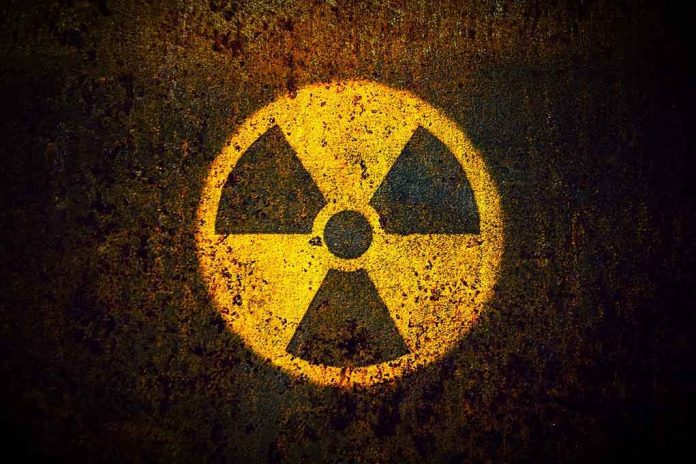
Mystery drones have breached the skies over a military base believed to store US nuclear weapons, exposing a glaring vulnerability that leaves American deterrence and national security at risk.
Story Snapshot
- Multiple drone incursions occurred within 24 hours near a nuclear weapons base, sparking alarm over US security.
- International agencies, including the IAEA, issued urgent warnings and requested access for inspection.
- Repeated incidents highlight the growing threat of unmanned aerial vehicles (UAVs) to critical infrastructure.
- Lack of attribution for drone operators raises concerns about sabotage, espionage, and technological gaps in defense.
Escalating Drone Threats Near US Nuclear Bases
Recent events have placed American national security under the microscope as multiple drones were detected over a military base believed to house US nuclear weapons. These incursions, occurring twice within a single day, triggered immediate security responses, including alerts and gunfire. The International Atomic Energy Agency (IAEA) responded by issuing stern warnings and demanding inspection access, underscoring the severity of the situation. For conservative Americans, these repeated violations raise urgent questions about the effectiveness of current defense protocols and the vulnerability of our most critical assets.
The drones reportedly approached within a few hundred meters of sensitive nuclear facilities, amplifying the risk of sabotage or unauthorized surveillance. The incidents occurred near active conflict zones, heightening the likelihood of further incursions, especially as global tensions rise and technological advancements make UAVs more accessible to hostile actors. The base’s strategic role in nuclear deterrence means any breach poses a direct threat to the United States’ ability to defend itself and maintain stability against adversaries.
Historical Patterns and Technological Vulnerabilities
Drone-related threats to nuclear sites have escalated dramatically since the early 2010s, with both state and non-state actors exploiting UAVs for surveillance, sabotage, and attacks. Notably, Russia’s invasion of Ukraine led to heightened military activity around nuclear facilities, including Zaporizhzhia and South Ukraine Nuclear Power Plants. Earlier this year, drones crashed near Chernobyl and Zaporizhzhia, causing minor damage but persistent safety concerns. The proliferation of cheap, commercially available drones has made these incidents increasingly frequent and difficult to prevent, prompting calls for stronger countermeasures and renewed focus on technological innovation in defense.
The repeated nature of these incursions, especially at bases believed to store nuclear weapons, amplifies both risk and international attention. International watchdogs like the IAEA have warned about the growing inability of traditional air defenses to detect and neutralize small, agile UAVs. Military analysts highlight that conventional systems are often inadequate against modern drone swarms, requiring urgent investment in advanced counter-drone technologies. For Americans concerned with constitutional protections and national sovereignty, these technological gaps are a stark reminder of the need for robust defense and vigilant oversight.
Stakeholders and Geopolitical Dynamics
The key organizations involved in responding to these threats include the IAEA, Russian and Ukrainian military forces, US military and NATO leadership, and unidentified drone operators—possibly state-sponsored or rogue actors. The IAEA’s role as an independent watchdog is hampered by access restrictions and political sensitivities, limiting its effectiveness in ensuring nuclear safety. Military commanders, national governments, and international agencies must work together to address these vulnerabilities, but power dynamics and bureaucratic inertia complicate coordinated action. The lack of clear attribution for drone operators creates uncertainty, raising the specter of sabotage, intelligence gathering, or tests of defense systems by adversaries.
Decision-makers such as IAEA Director General Rafael Mariano Grossi, US and NATO military leaders, and Russian and Ukrainian defense ministries influence responses to these incidents, but political friction and international law constraints often slow progress. Conservative Americans rightly demand accountability and a renewed commitment to traditional values of national defense, limited government overreach, and the protection of family and community from external threats.
Current Developments and Urgent Responses
In recent statements, the IAEA reported multiple drone incidents at nuclear sites in Ukraine and other regions, including close-quarters approaches and minor damage, though no casualties were recorded. Emergency protocols were activated, with facilities like Zaporizhzhia relying on backup power systems as a precaution. Director General Grossi called for maximum military restraint and immediate cessation of drone flights near nuclear facilities, highlighting the urgent need for improved security measures.
Despite increased scrutiny, the ongoing risk persists, with regular drone sightings and escalating international concern. The September 2025 incident involving 22 drones near the South Ukraine Nuclear Power Plant is just one example of the frequency and severity of these threats. Short-term impacts include heightened security alerts and temporary shutdowns at nuclear sites; long-term implications point toward potential catastrophic incidents if drones cause significant damage. These events drive increased investment in counter-drone technologies and pressure the nuclear industry to enhance security protocols.
Expert Analysis and Future Outlook
Industry experts consistently warn that drones pose a significant and growing threat to nuclear security, especially in conflict zones and at sites storing nuclear weapons. Military analysts argue that traditional air defenses are not up to the challenge of defending against agile UAVs, necessitating a new technological arms race between attackers and defenders. Nuclear safety scholars stress the need for international cooperation and robust policy reform to address these asymmetric threats. The rapid evolution of drone capabilities and the difficulty of detection and neutralization highlight vulnerabilities that must be addressed if the US is to maintain its deterrence and protect its citizens.
For conservative audiences, these incidents are stark reminders of the need to defend constitutional rights, prioritize national security, and demand accountability from government and military leaders. Effective countermeasures and collaboration among stakeholders are urgently needed to prevent disaster and preserve the safety of American families and communities.
Sources:
IAEA warning over drones near nuclear sites
IAEA issues fresh warning over drones near nuclear plants
Drones detected at nuclear sites
Drone technology and the future of nuclear weapons
First drone war between nuclear nations raises global alarm





